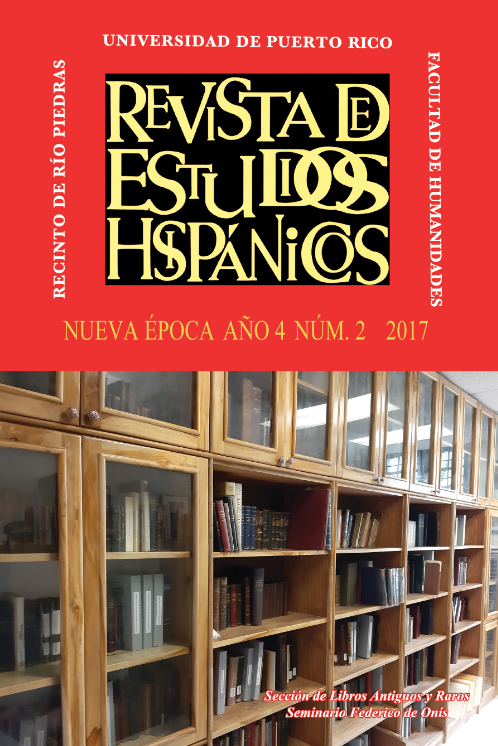Abstract
This paper examines the different ways the figure of the chronicler is shaped by Edgardo Rodríguez Juliá in El entierro de Cortijo (1983). In this text, Rodríguez Juliá delves into the elusive concept of Puerto Rican identity, by exploring the different ways in which, as a collective subjectivity, Puerto Ricans experience death. In his exploration, the author constructs a chronicler who undertakes different roles that are linked with the different levels of the text. Through textual analysis of a representative extract, this paper identifies three levels of development: the geographical location and its inhabitants; the different forms of speech and orality, as well as the figure of the chronicler; and finally, the national biography. These three levels are linked to three different roles undertaken by the chronicler: he is an observer in the first case, a listener in the second one, and an interpreter in the third. The narrative discourse which frames the first and second levels is intertwined with the essayistic discourse of the third. This can be considered an attempt to forge a definition of the Puerto Rican identity, which is presented as complex, heterogeneous and fragmented.This work is licensed under a Creative Commons Attribution-NonCommercial 4.0 International License.
Downloads
Download data is not yet available.

